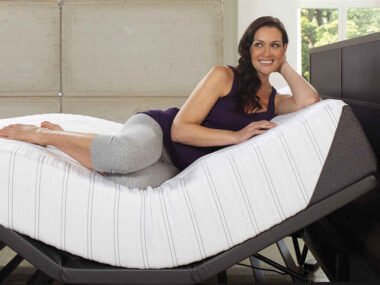Living in New Jersey, it’s hard not to notice how conversations around climate and cost-of-living keep colliding. Whether it’s the rising energy bills during a long winter, or that growing list of sustainability goals every town seems to be chasing, most people are starting to ask the same thing: what can I actually do in my own home that makes a difference? In this blog, we will share how better planning can reduce your household footprint without turning your life upside down.
Start Where the Energy Goes
Energy use is where most households leave their largest mark, and for many, it starts with heating, cooling, and those always-on appliances we barely think about. Planning your upgrades instead of reacting to broken systems helps you control that footprint before it grows. And the shift toward cleaner energy sources is becoming more realistic for homeowners looking to future-proof their setups.
Solar energy, in particular, has gone from being a niche luxury to a serious, accessible option—especially in states like New Jersey, where rebates and incentives have made the transition easier to justify financially. Partnering with certified solar panel installers in NJ gives you access to tailored insights on how much power your home actually needs and how to offset it efficiently. Not all installations are created equal, and the right team will assess your usage habits, roof exposure, and budget, rather than pushing a one-size-fits-all system.
What’s changing now is the mindset. More homeowners are realizing solar isn’t just about saving the planet—it’s about building long-term financial stability. With energy costs still fluctuating and grid reliability often debated, solar offers some control back to the household. Plus, when done right, it helps lower emissions significantly, which is really the point.
Less Stuff, Smarter Spaces
You’ve heard of spring cleaning. But what about consumption cleaning? The average household has more things than it needs, and not just in the attic. Closets, drawers, even digital storage gets overloaded with stuff that rarely adds value. Planning for a smaller footprint means being intentional not only about how you power your home, but how you fill it.
A growing number of people are leaning into the less-is-more approach—not for the aesthetic, but for the relief it brings. When you plan a room based on how it will actually be used, not how a magazine says it should look, everything runs smoother. Fewer impulse buys. Less clutter. Less waste. And ultimately, less to replace later.
Intentional consumption doesn’t mean bare shelves. It means choosing long-lasting items, fixing what’s fixable, and skipping the trend that looks great on Instagram but doesn’t match your real life. Over time, that shift adds up to fewer products shipped, less packaging thrown out, and more money redirected to things that really matter.
Water Habits That Actually Stick
Most water-saving advice feels painfully repetitive. Turn off the tap while brushing your teeth. Fix the leaky faucet. Collect rainwater. These tips aren’t wrong—they’re just not enough on their own.
The more impactful move is to plan water use into your routines. This includes how you landscape your yard, how you wash your clothes, and what appliances you choose when old ones break down. High-efficiency dishwashers and washing machines might not feel like exciting purchases, but they pay off in the long run—both in reduced utility bills and a smaller environmental footprint.
Even more relevant lately is the way local governments are starting to respond to drought conditions and rising water demand. Homeowners who’ve already built water-conscious systems into their homes—gray water reuse, smart irrigation, low-flow fixtures—aren’t scrambling to keep up. They’re already ahead, and that comfort is worth something.
Make Maintenance Part of the Plan
One of the biggest mistakes people make is waiting until something breaks to replace it. Not only does that usually cost more, it leads to rushed decisions—and rushed decisions often lead to short-term fixes that don’t help your footprint at all.
Instead, households that run well are usually the ones with a plan. They know when the HVAC was last checked. They’ve scheduled insulation reviews before winter, not during it. They’ve sealed windows in the fall. These aren’t glamorous chores, but they’re the ones that quietly save energy, prevent overuse, and keep the system running efficiently.
Routine also applies to cleaning. Choosing low-impact products, minimizing single-use plastics, and investing in reusable tools shifts the way your home consumes resources daily. These decisions aren’t complicated, but they require intention. And intention, more than anything, is what separates reactive households from sustainable ones.
Behavioral Shifts That Last
No plan works without buy-in. Every household has its own habits, and reducing your footprint isn’t about being perfect—it’s about changing the baseline. Start with a few small, trackable shifts. Turn off lights more often. Wash clothes on cold. Cook with the oven less and use the stove or toaster oven when you can.
The key is to make these changes stick. Post reminders. Create incentives. Turn it into a challenge if you live with others. And most importantly, talk about why it matters. Kids, roommates, partners—they’re more likely to join in if they see the benefit, not just the restriction.
What helps here is visibility. Smart meters, energy apps, and usage trackers let you see progress in real time. Seeing your water or electric bill drop isn’t just rewarding. It’s motivating.
A Smaller Footprint Doesn’t Mean a Smaller Life
People often assume that sustainability requires sacrifice. Less comfort. Less convenience. Less joy. But in practice, the opposite tends to happen. When a household is planned with intention, everything works better. Meals are easier. Spaces feel calmer. Energy use is smarter. And there’s less waste to clean up—of time, money, and materials.
Reducing your footprint isn’t about turning your home into an off-grid bunker. It’s about aligning your habits with your values. Planning ahead so you’re not constantly in catch-up mode. And recognizing that home isn’t just a place you live—it’s a system you’re responsible for.
In a world where everything feels louder, faster, and more complicated, a functional, low-impact home becomes its own quiet rebellion. A place that reflects not just who you are, but how you choose to live. Not perfectly. Just a little better, every day.










